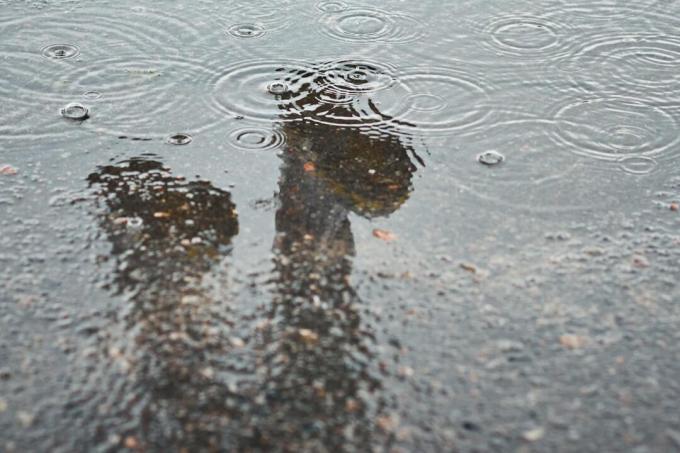
Lawn seed needs enough moisture to grow well. Otherwise, the green carpet remains a pipe dream. But what if it rains heavily when sowing? Read here if you Lawn should sow when there is a lot of rain.
In a nutshell
- Lawn seed needs moisture, light and warmth
- If heavy rain is announced, it is better to wait with sowing
- Waterlogging promotes pest infestation and diseases
- simple measures prevent damage
contents
- Sow the lawn when it rains
- Measures before the rain
- Measures after the rain
- frequently asked Questions
Sow the lawn when it rains
A beautiful green lawn is not rocket science. If you pay attention to the needs of the plants and choose the sowing date carefully, a green carpet will soon spread out in your garden. When it's dry and light rain is forecast for the coming days, that's it perfect time for sowing came.
However, if heavy rain is forecast for the announced date, you should refrain from sowing lawns for the following reasons:
- lawn seed is washed away
- unsightly holes in the lawn threaten
- small plants cannot withstand the pressure of rainwater
- Sludge formation due to heavy rain

There is also a risk of waterlogging in the lawn. The consequences:
- risk of rot
- Plants do not thrive
- increased susceptibility to pests and Diseases
- only reduced nutrient uptake possible
- There is a risk of young lawn plants dying off
A notice: Yellowing of the plants is a clear sign of a nitrogen deficiency.
Measures before the rain
Protect seed with fleece
If rain is imminent after sowing, lay plant fleece over the area to protect the sowing. This prevents the light grass seeds from being washed away. Alternatively, you can use a waterproof tarpaulin.
dig trenches
Dig ditches around your freshly seeded lawn. This will make it easier for the water to drain away.
Measures after the rain
aeration

Poke small holes in the lawn after the rain. The piercing loosens the soil and promotes the infiltration of rainwater. You can use a very simple digging fork for this.
Distribute fine sand
Spread fine sand to speed up the drying of the waterlogged area.
Danger: You should never walk on the lawn after heavy rain. With your body weight, you would additionally compact the soil, making ventilation more difficult and reducing water absorption when it rains.
frequently asked Questions
Make sure the lawn is well aerated. Regular scarifying pays off. It prevents felting and facilitates water seepage during heavy rainfall.
Conditions for grass seed growth are best in spring, between late April and early May. It is often too cold beforehand. Lawn seeds need light and warmth. Note the nighttime temperatures. The floor should be 10 degrees warm. Alternatively, you can sow lawns at the beginning of autumn.
Clear the designated area of weeds, roots and stones and dig over it. After that, the soil needs about two weeks of rest. Rake and roll the area. Check the soil quality. Acidic soil can be optimized with a lime application. Before sowing, fertilize the soil with compost.
A simple way is to dig out a clod of grass with a spade. This way you can see if the soil is still deeply moist. Then you should wait before reseeding to repair holes in the lawn. After the test, reinsert the floe. It grows back quickly. Alternatively, you can use a moisture meter.


